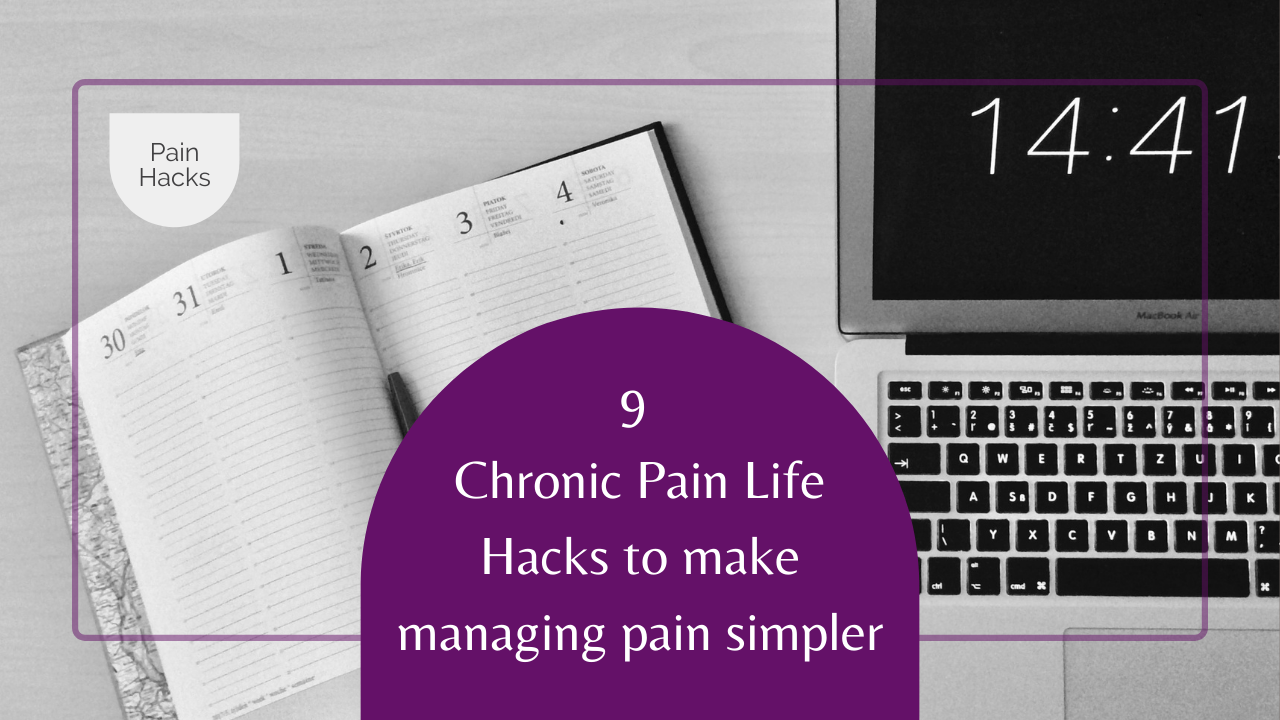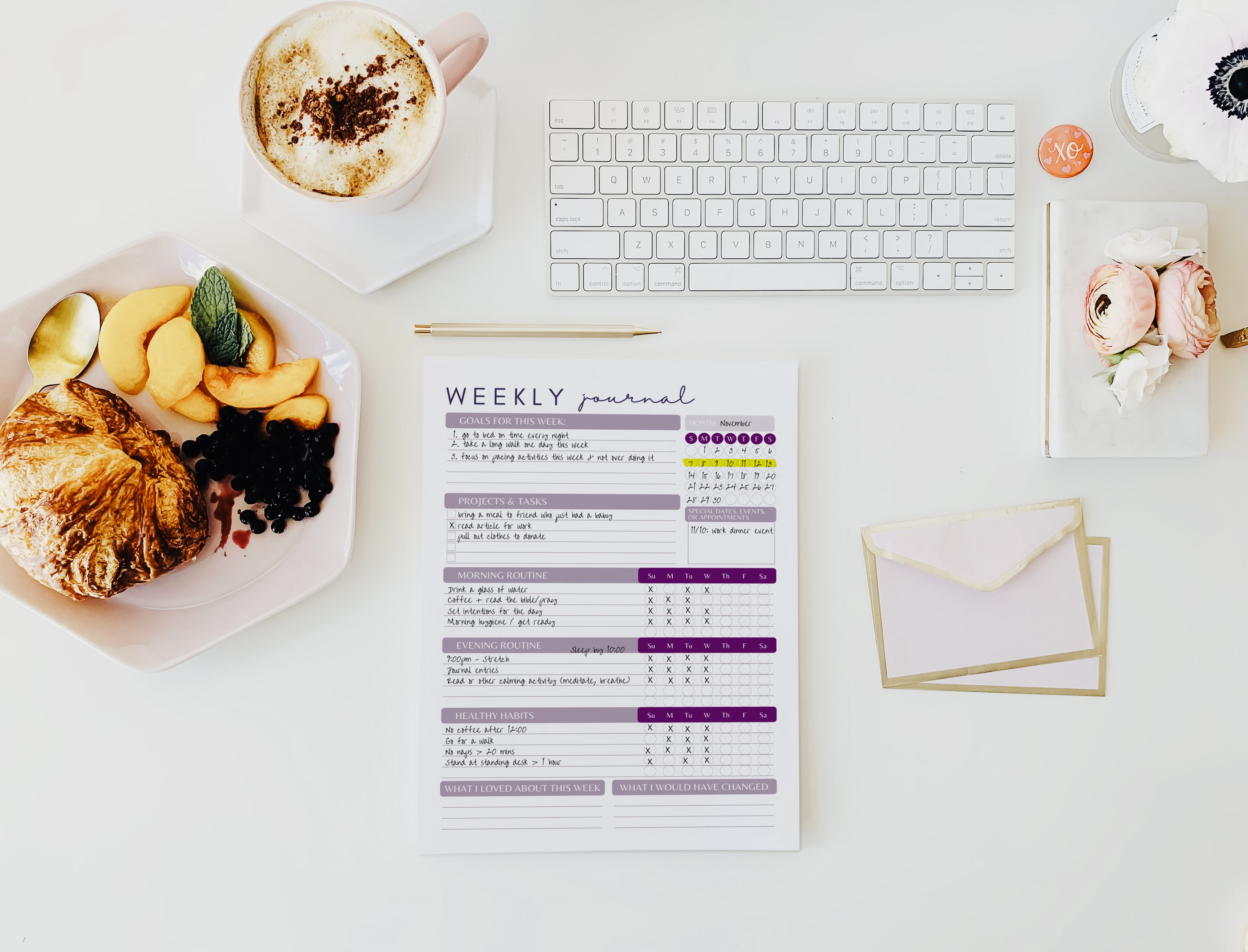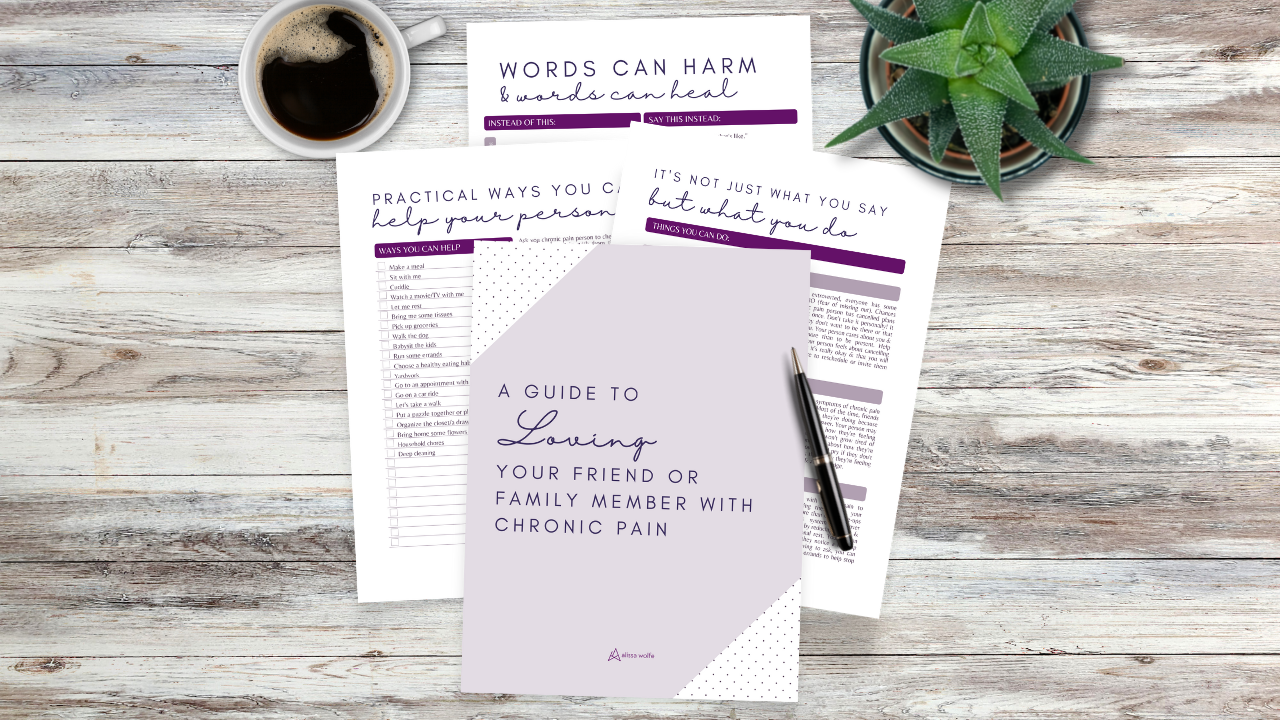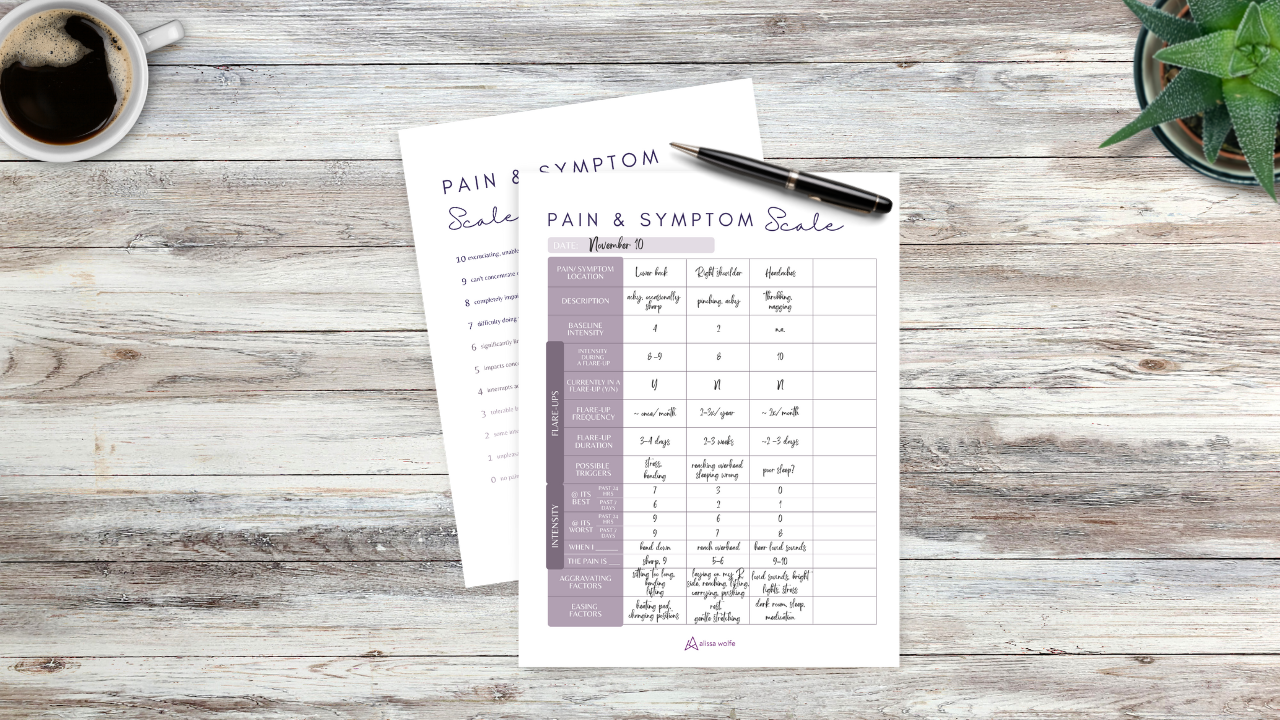9 Chronic Pain Hacks

Let's face it, the health care system doesn't offer the most effective, long-term solutions for pain relief. Which means the responsibility for finding pain management solutions falls on the person with the pain. But when most people with chronic pain suffer from fatigue, brain fog, and anxiety, finding and sticking to those pain management solutions is easier said than done.
If you are a person with chronic pain, I have some quick life hacks that will eliminate stress and make managing your pain much easier.
In this post, I'm sharing 9 life hacks for chronic pain warriors to help you stress less, sleep more, and keep your nervous system calm and happy.
1.Create a consistent morning and evening routine
With persistent pain, the body gets stuck in a chronic state of fight-or-flight, over reacting in an attempt to protect you from any and all stimuli. With this in mind, you can eliminate one layer of unpredictability by creating consistent routines or processes that you go through every morning and every night. This will provide your nervous system with a sense of safety and predictability. With less surprises, it has less of a need to protect you, so it can relax knowing what is coming next.
Start your evening and morning routines at the same time every day and follow each step in your routines in the same order. Make sure you go to bed and wake up at the same time every day. Over time, your body will get the hang of this process and will thank you for providing it with comforting consistency by falling into a rhythm of resting, relaxing, and repairing.
2. Set alarms and reminders
There is no shame in setting up reminders to help you remember things. But you can also use reminders to help you stick to your healthy habits. I personally like to set reminders to stand up every hour at my standing desk until I feel like sitting again.
Here are some reminders I recommend you set up for yourself:
-
A recurring alarm that goes off every morning telling you to wake up and get out of bed
-
A recurring alarm that reminds you to start your evening routine, usually about an hour before your ideal bed time
-
A reminder to rest a few minutes into starting a long project. For example, maybe you want to organize your garage but you can't do it all at once because, well... pain... so you could set an alert to remind you after 15 minutes to take a rest break.
-
A reminder to get up from your rest break or nap. Sometimes naps and rest breaks drag on a little too long. If you need a rest or a nap, set an alarm for when to get up and start moving/being productive again. Could be 5 minutes... could be a couple hours... Gauge the time of your rest break based on how your body feels.
-
Reminders to take a sip or drink a glass of water at certain time intervals
-
Reminders to move or change positions. If you have a stationary job, set reminders to move, walk, or change positions at least once every hour.
3. Have a flare-up tool kit
When a flare-up starts, the last thing you want to worry about is A. what can I do to calm this down and B. where is all my stuff to help me calm it down.
Brainstorm all the things you could use during a flare-up that help you calm your system down and collect them all in one place. Don't forget your heating pad, TENs unit, favorite books, journal, snacks, and water bottles.
Collect all those items and store them in one container, whether that's a drawer in your bedside table or a basket you store in your closet or under your bed. This kit will help you to combat your flare-up as soon as it starts with less stress.
4. Keep a journal
Your journal will help you recognize trends and relationships, triggers and pain relievers. It can also be a place you track or log the steps you do in your daily pain management routine, making you more likely to do them!
Your journal entries don't have to be paragraphs with complete sentences of well written prose describing how you feel and what you did each day - unless writing is an artistic outlet of yours. If you don't enjoy writing you can use a simple outline to quickly record important details such as your mood, energy level, or unusual symptoms. Make sure you save place to record and check off items in your pain management routine.
5. Keep a medical history log
You'd be surprised how many patients don't know important details of their medical history. This is very important to have recorded so you can relay accurate information to your medical providers.
I recommend creating a one-page medical history summary that bullet points all surgeries and procedures you've had (with their dates), medication history (and their effects), diagnosis/injury list, previous therapies you've tried (with dates), and any diagnostic testing you've had done with dates and results.
6. Keep a pacing log
Pushing yourself into pain makes the pain problem worse by reinforcing those pathways in your nervous system. One way to decrease the strength of those pain pathways is practice pacing. Pacing involves pushing TO the point of pain, but not THROUGH it. In order to make pacing a consistent practice, because, let's face it pacing is HARD... it's helpful to track your activity tolerance level for certain activities, movements, and exercises.
Record how much of a certain activity you did when you noticed your pain increase. The next time you complete that activity, try to stop (rest or modify) at that point or before that point. You may notice that you can go further without causing pain to come on. You will want to record all the progress you make so you know your limits.
7. List things someone can do to help you during a flare-up
Flare-ups are our body's way of demanding deliberate rest. They are times where you will need to modify your task load so that you can do the things your body needs to recover quickly. It's important that your friends/family know members know how they can help.
Write down a list of things they can do to help lighten your load and support you during a flare-up. Discuss these items with them and make sure you have their consent to help you as well.
8. Use the same pain scale at all of your doctor's appointments
The 0-10 pain scale is NOT my favorite and if we weren't forced to use it at doctor's visits I would get rid of it entirely. It's not very accurate or reliable, and certainly doesn't measure the extent of suffering pain causes in our lives. But, the pain scale can be used to track your status, so that your doctors know if you're getting better, worse, or staying the same with different treatment modalities.
To make your pain ratings more accurate and consistent, it's best to use the same pain scale to base your rating on. Print out or screen-shot your favorite pain scale with definitions listed for each number. Use that same scale at every doctor visit. Your doctor doesn't necessarily need to know how you define each number on your scale, but it's good practice to be consistent so that you and your doctor can better measure if you're improving or not.
9. Use a productivity tool
Organization reduces stress and reducing stress reduces pain. Automation and reminders can make you more consistent with completing healthy habits and regularly completing healthy habits and routines can reduce pain. Using a productivity tool can help you be more organized and provide you with accountability that you won't get on your own.
There are many free productivity tools available including Trello, Google Tasks, ClickUp, and Asana. My personal favorite is ClickUp because it's the app designed to replace all other apps.
In fact, I have a ClickUp template designed to help you manage your pain and your life in one place. I'll teach you the system I teach my clients and get you started using this customizable tool, in the LimitLess Template & Training.
Combining all the hacks on this list will help your nervous system unwind, reduce stress, create clarity and organization, and manage your chronic pain better.
If you're looking for a system that combines all these hacks and helps you manage your pain and your life with one tool, The LimitLess Template & Training is for you.
This package will give you the neuroscience-based, pain management system I teach my clients and will set you up with the organization, consistency, and accountability you need to get in control of your pain.
Get Pain Articles & Neuroscience Nuggets Sent To Your Inbox.
Subscribe to my Blog!













